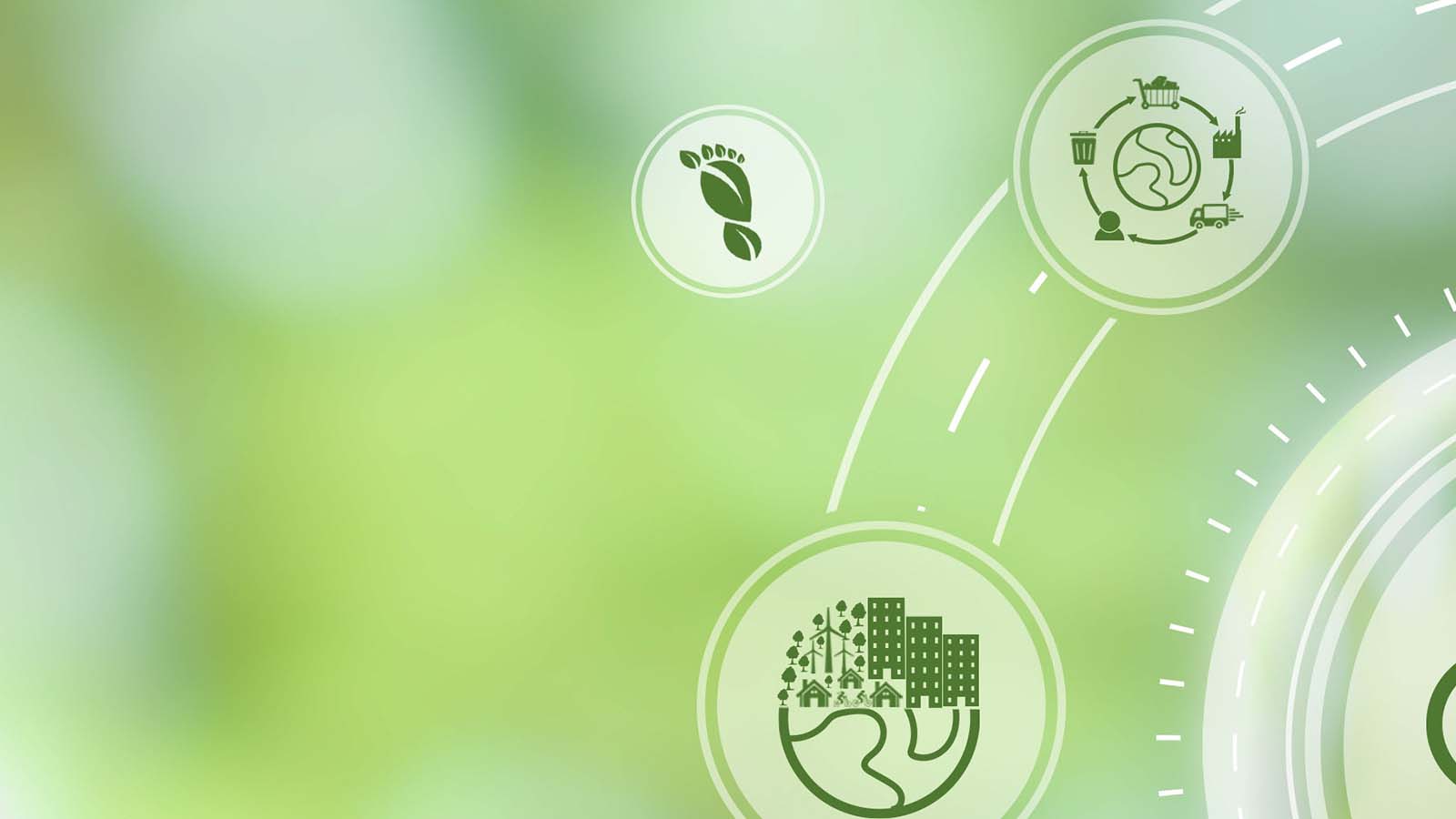Greenhouse Gas Emissions Scope 3: Upstream and Downstream Emissions
Never miss a thing.
Sign up to receive our insights newsletter.

Is Your Business Ready to Measure and Report Its Greenhouse Gas Emissions?
Scope 3 emissions are indirect emissions arising from both upstream and downstream activities of a company. They represent all the greenhouse gas (GHG) emissions along a product’s value chain, from product design, consumer purchase and use to the end of the product life.
Scope 3 emissions are often the largest component of a company’s GHG footprint. They include indirect emissions that are not accounted for in Scope 1 and 2 emissions. Further complicating the accounting, another company’s Scope 1 direct emissions, and Scope 2 indirect emissions are often the reporting company’s Scope 3 emissions.
Here we will discuss the different sources of Scope 3 emissions, how to account for them appropriately, to avoid double counting, and the benefits for companies to do a Scope 3 inventory.
What Are Scope 3 Emissions?
Scope 3 GHG emissions include for the same six GHGs that are inventoried in Scope 1 and Scope 2: carbon dioxide (CO2), methane (CH4), dinitrogen oxide (N2O), hydrofluorocarbons (HFCs), perfluorocarbons (PFCs) and sulfur hexafluoride (SF6). What’s different is where they appear in the product’s value stream. Upstream emissions are emitted during the acquisition and preprocessing of materials and supplies. Downstream emissions are associated with distribution and storage of goods, their use and how they are dealt with at their end of life.
The GHG Protocol categorizes Scope 3 emissions into 15 categories split between upstream and downstream emissions. Upstream emissions occur before reaching the company’s organizational or operational boundaries, while downstream emissions happen after leaving the boundaries (Table 1).
Table 1. Scope 3 Categories
| Upstream Scope 3 Emission Sources | Downstream Scope 3 Emission Sources |
|---|---|
| Purchased goods and services | Product transportation and distribution |
| Capital goods | Use of sold products |
| Fuel- and energy-related activities | Processing of sold products |
| Waste generated in operations | End-of-life treatment |
| Business travel | Leased assets |
| Employee commuting | Franchises |
| Leased assets | Investments |
| Transportation and distribution |
There are two important aspects that need to remain constant across all scopes of GHG inventories: organizational boundaries and accounting approach. As outlined in Scope 1 emissions reporting, there are three ways to set organizational boundaries: equity share (percentages based on economic interest); financial control (100 percent of GHG emissions over aspects where the company has financial control); and operational control (100 percent of GHG emissions where the company has operational jurisdiction).
What Are the Business Benefits of Inventorying Scope 3 Emissions?
Scope 3 inventories can help companies find places to increase operational efficiencies and often lead to decreased costs overall. Environmentally conscious consumers seek lower-emission goods and services, and requiring partners with lower emissions along the value-chain can drive innovation.
It’s also an opportunity to lead by example. Documenting emissions reductions can differentiate a company from others — especially since it is currently voluntary. Creating best practices now will help when the Securities and Exchange Commission’s proposed enhanced climate change reporting rule changes, revealed March 21, 2022, require Scope 3 reporting.
How Do You Calculate Scope 3 Emissions?
Unlike Scope 1 and 2 emissions, Scope 3 emissions vary widely in impact. Companies should prioritize activities that are most likely to have significant GHG emissions and that offer the most benefits from reduction. The GHG Protocol issued technical guidance on Scope 3 screening based on seven criteria: quantity of emissions, influence, stakeholders, risk, outsourcing, sector guidance, and spending or revenue. Influence refers to emissions that can be reduced or directly influenced by the company. Stakeholders and risk criteria are related to consumer principles that guide GHG emission controls, such as customer sentiment and the financial risks associated with the emissions.
Like Scope 2, two pieces of information are required to calculate Scope 3 emissions: activity data and primary emissions factors.
Activity data is the quantitative measure of GHG emissions, such as the volume of fuel consumed or the mass of a starting material purchased. Depending on the activity, companies may use primary data or secondary data to calculate activity data. Primary activity data are measured or collected from the company’s value chain, while secondary activity data are drawn from industry averages.
Emissions factors are values used to convert an activity to carbon dioxide equivalents (CO2e) for Scope 3 accounting. Companies must consider factors related to the material/product emissions factors and energy-related emissions factors.
Material or product emissions factors
- Life cycle emissions: every aspect of a material or product from raw material to end of life
- Cradle to gate: only accounts for upstream emissions from production through point of sale
Energy-related emissions factors
- Life cycle emissions: all the emissions from burning fuel, including the fuel from extraction of raw materials, processing the materials and transportation
- Combustion emissions: only emissions that occur from combusting fuels
How Do You Avoid Double Counting?
Each of the 15 categories of Scope 3 emissions uses a different computational method. Sometimes different methods are required within the same category of emission. For example, business travel can be accounted for based on fuel, distance or amount spent on transportation. Decision trees are available in the GHG Protocol to help companies navigate the complexities of Scope 3 emissions. The kind and type of available data is used to determine the method for calculating GHG emissions. Become familiar with the guidance — or let us help — to avoid double counting.
How Can Companies Reduce Scope 3 Emissions?
Because Scope 3 emissions are so varied, there are many opportunities to reduce emissions. For example, worker commuting emissions could be reduced by encouraging public transportation or by lobbying for public transportation improvements. The cost of providing employees with train, subway or bus passes may qualify as small offsets. Reduction can be accomplished by using cradle-to-cradle materials, holding business meetings virtually or reducing waste. Low-cost changes can lead to reduced emissions, cost savings and positive perceptions by consumers and stakeholders.
How can Weaver help?
Whether your company is just beginning to consider the benefits of getting involved in green energy segments or you’re a current player seeking to expand your markets, Weaver has the perspective and capability to help you succeed.
The environmental programs we assist with are rooted in managing human impact on the environment, reducing GHG emissions and increasing sustainability.
Our team of energy professionals brings a wide variety of backgrounds to help clients solve problems. In addition to the CPAs you would expect, we employ registered professional engineers, chemists and environmental lawyers. They combine years of experience in traditional oil and gas with up-to-the-minute understanding of emerging renewable markets.
Within the renewable fuels industry, our Energy Compliance Services team is a dominant force, helping businesses navigate compliance with regulations from agencies such as the EPA, Environment and Climate Change Canada, the U.S. Customs and Border Protection Agency and the California Air Resources Board, as well as agencies in other states and provinces. We help companies of all sizes understand regulatory requirements, maintain corporate compliance, and identify and maximize benefits that might be available under “green” programs.
Many of the world’s leading energy companies, across all segments of the industry, are our clients. We understand the regulatory and technical issues related to sustainable or low-carbon energy as well as the financial issues involved in carbon sequestration tax credits and green finance.
©2023
Weaver’s Greenhouse Gas Emissions series takes a deep dive into the three different types of emissions, called “scopes” used to delineate direct and indirect sources of greenhouse gas emissions. This is one in a series of related posts:

